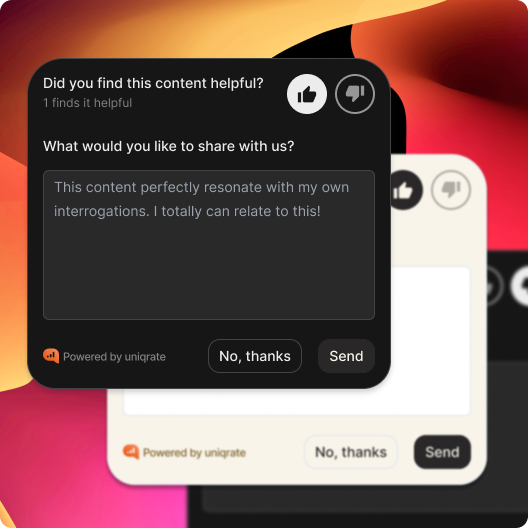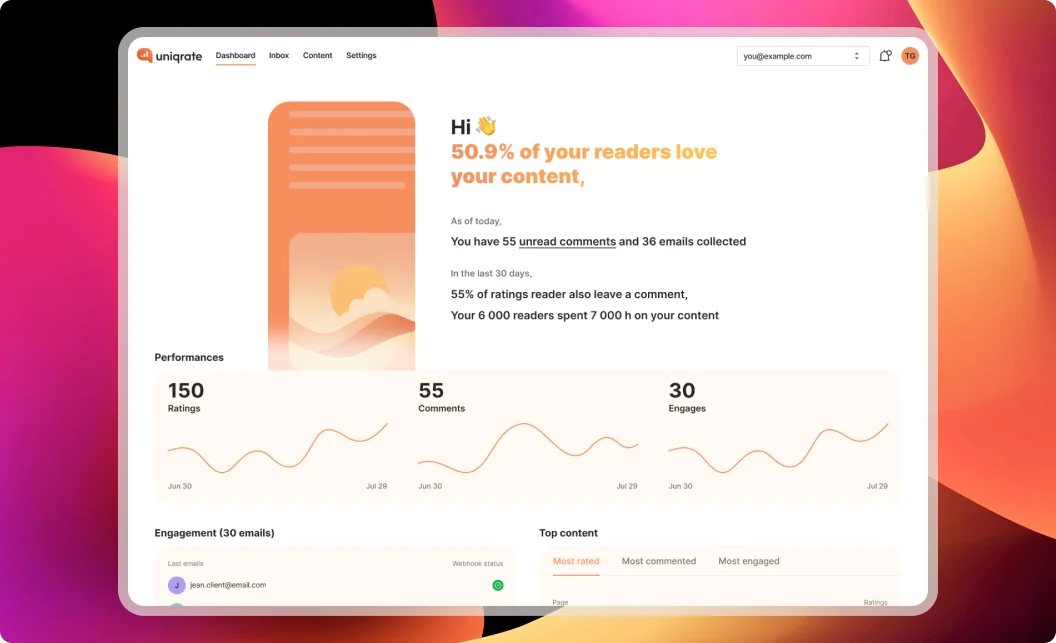Collecting and using reader feedback is essential for improving your WordPress blog, engaging your audience, and driving growth. Whether you’re a blogger or a technical writer, feedback offers actionable insights that can help you create better content, optimize user experience, and even capture leads.
In this article, we’ll explore how to gather reader feedback on your WordPress site and how to use it to enhance your blog’s performance.
Why reader feedback matters for WordPress blogs
Reader feedback goes beyond basic metrics like pageviews or time on page. It provides qualitative insights into your audience’s preferences, challenges, and needs.
Benefits of gathering reader feedback:
- Content improvement: Understand what your readers value most and identify areas for enhancement.
- Increased engagement: Feedback tools create a two-way connection, making readers feel heard and valued.
- Better user experience: Address design or navigation issues that might frustrate your audience.
- New content ideas: Learn what topics your readers want you to cover next.
- Lead generation: Use feedback forms to capture email addresses in exchange for valuable resources like whitepapers or guides.
How to collect reader feedback on WordPress
WordPress offers numerous tools and plugins to gather reader feedback effectively. Here are some methods you can implement:
1. Add a feedback tool
Interactive feedback tools, like Uniqrate, make it easy for readers to share their thoughts without disrupting their experience.
Features of Uniqrate’s feedback island:
- Vote: Allow readers to rate the helpfulness of your articles.
- Comment: Collect qualitative insights through suggestions or questions.
- Engage: Capture emails in exchange for resources like PDFs or discounts.

2. Enable comments on blog posts
Encourage readers to leave comments at the end of your articles. To maximize participation:
- Ask open-ended questions like, “What did you think of this post?” or “What topics should we cover next?”
- Moderate comments to ensure a respectful and constructive environment.
3. Use surveys and polls
Integrate surveys or polls into your WordPress blog to gather structured feedback. Tools like Google Forms, Typeform, or WordPress survey plugins can help.
- Keep surveys short and focused to increase response rates.
- Offer incentives like free resources to encourage participation.
4. Embed social proof
Showcase feedback from other readers to build trust and encourage more engagement. For example:
- Display a stat like “500 readers rated this article helpful” on your blog.
- Highlight positive comments or testimonials to reinforce credibility.
5. Send follow-up emails
If you have an email list, reach out to subscribers for feedback. For example:
- Ask them to rate your latest article.
- Include a link to a short survey about their content preferences.
How to use reader feedback effectively
Once you’ve gathered feedback, the next step is to act on it. Here’s how:
1. Refine your content strategy
Analyze feedback to identify what your audience wants:
- Create more content on high-demand topics.
- Address frequently asked questions or unresolved issues.
- Experiment with new formats, like videos or infographics, if suggested.
2. Enhance user experience
Feedback about design, navigation, or readability can help you optimize your site:
- Improve mobile responsiveness if readers report issues on smaller screens.
- Simplify navigation to make it easier for visitors to find content.
- Fix loading speed problems to reduce frustration.
3. Turn feedback into engagement opportunities
Show readers that you’re listening by implementing their suggestions and acknowledging their contributions:
- Update articles based on feedback and share the improvements in a follow-up post.
- Thank readers who leave valuable comments or ideas.
4. Capture leads through feedback tools
Use tools like Uniqrate to not only gather insights but also turn feedback into a lead-generation opportunity:
- Offer gated content, like whitepapers or eBooks, in exchange for email addresses.
- Follow up with personalized email campaigns based on the feedback provided.

Conclusion
Reader feedback is a powerful tool for improving your WordPress blog and fostering deeper connections with your audience. By leveraging feedback tools, engaging readers through comments and surveys, and acting on their input, you can enhance your content, improve user experience, and drive meaningful growth.
Start collecting reader feedback today with Uniqrate and transform your WordPress blog!
